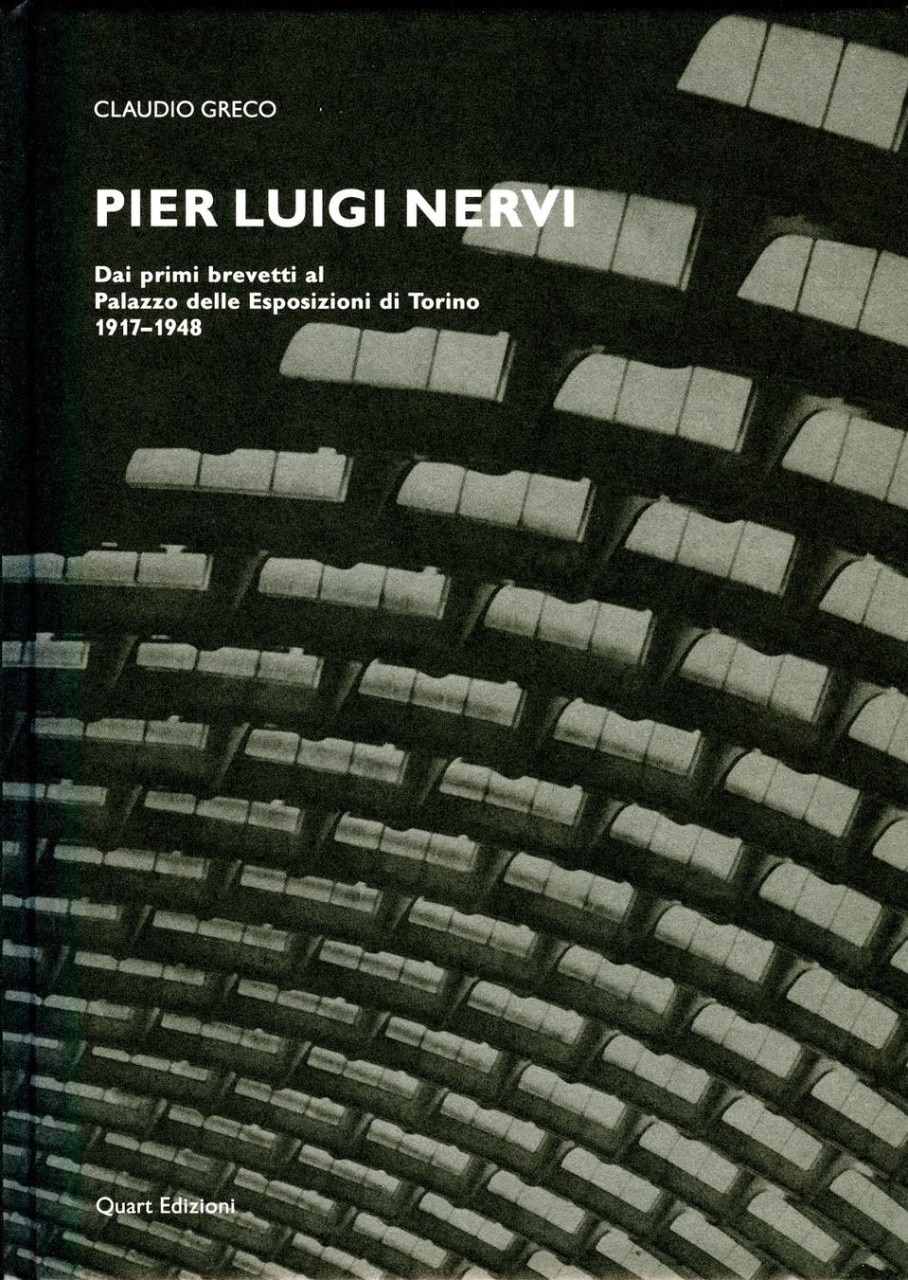Pier Luigi Nervi. Dai primi brevetti al Palazzo delle Esposizioni di Torino 1917-1948
Claudio Greco, Quart Edizioni, Lucerna 2008 (pp. 303, s.i.p.)
Immediately after World War II, the reinforced-concrete architecture of Pier Luigi Nervi (1891-1980) seemed to have resolved the disunion between casing and load-bearing structure that had been troubling 20th-century theorists and architects. Since then, the major and controversial (Zevi, 1950) critical success of the Italian engineer’s most seductive buildings has been partially obscured by his more far-reaching professional career.
Claudio Greco’s book explores Nervi’s training and early career, spanning from 1913, when he graduated in Bologna, to the inauguration of Palazzo delle Esposizioni in Turin, in 1948. With the aid of extensive archive investigation (Domus, December 1994), the author brings together the threads of the extraordinary and determined experimental research that attained its most mature and balanced results around 1950. Greco also redeems the most famous buildings from the ambiguous interpretation – starting with the engineer’s own writings – that had presented them mainly as the brilliant product of a nebulous exchange between science and art.
Retracing the figure of Nervi to his university education and the routine of his long professional career (commenced in the company of his “master” Attilio Muggia and then pursued in two successful independent engineering firms) meant stringing together an anthology of works selected from thousands of projects distributed in several archives. The selection, backed up by a rich and previously unpublished set of illustrations, retraces a genetic line comprising the refined construction solutions of the Berta Stadium (Florence 1930-32), the Italian Air Force hangars (Orvieto, Orbetello and Torre del Lago, 1935-38) and, most importantly, Palazzo delle Esposizioni in Turin (1948). This approach shapes an account that penetrates the structural logic behind Nervi’s buildings and uncovers how they function. With a language that eschews needless technical jargon, the book shows readers how Nervi accumulated productive intuitions and countless patents in the search to perfect two main construction theories: the segmented prefabrication of large support structures and the development of thin concrete walls with evenly distributed reinforcement. Backed by extensive knowledge of reinforced-concrete theories and applications, the two inventions eventually came together in the innovative construction system for Palazzo delle Esposizioni, which, paradoxically, frees the forms and measurements from the limitations of the low-tech worksite while actually originating from the backward and artisan nature of the building sector.
The works presented in the book were therefore laborious and gradual refinements of a personal design system that gained maturity from on-site experience and tests on scale models rather than theoretical calculations. This working method seems to combine a scientific method and the artisan practice of experimentation, in the sense of gamble, attempt and intuition. Favouring the period prior to 1950, considered his most innovative and vibrant, the author focuses mainly on the technical and constructional aspects of Nervi’s professional career. Nonetheless, the more essentially cultural context and the disciplinary debate of the 1930s are evoked in the engineer’s relationships with architects and leading architectural journals. With a similar – but less justifiable – time frame, the bibliography of writings about him stops at 1951 and is only partly redeemed by the lively accompanying notes on the text. A precise list of works carried out between 1917 and 1948, a detailed list of the patents registered and a prized transcription of the most important ones complete the presentation.


